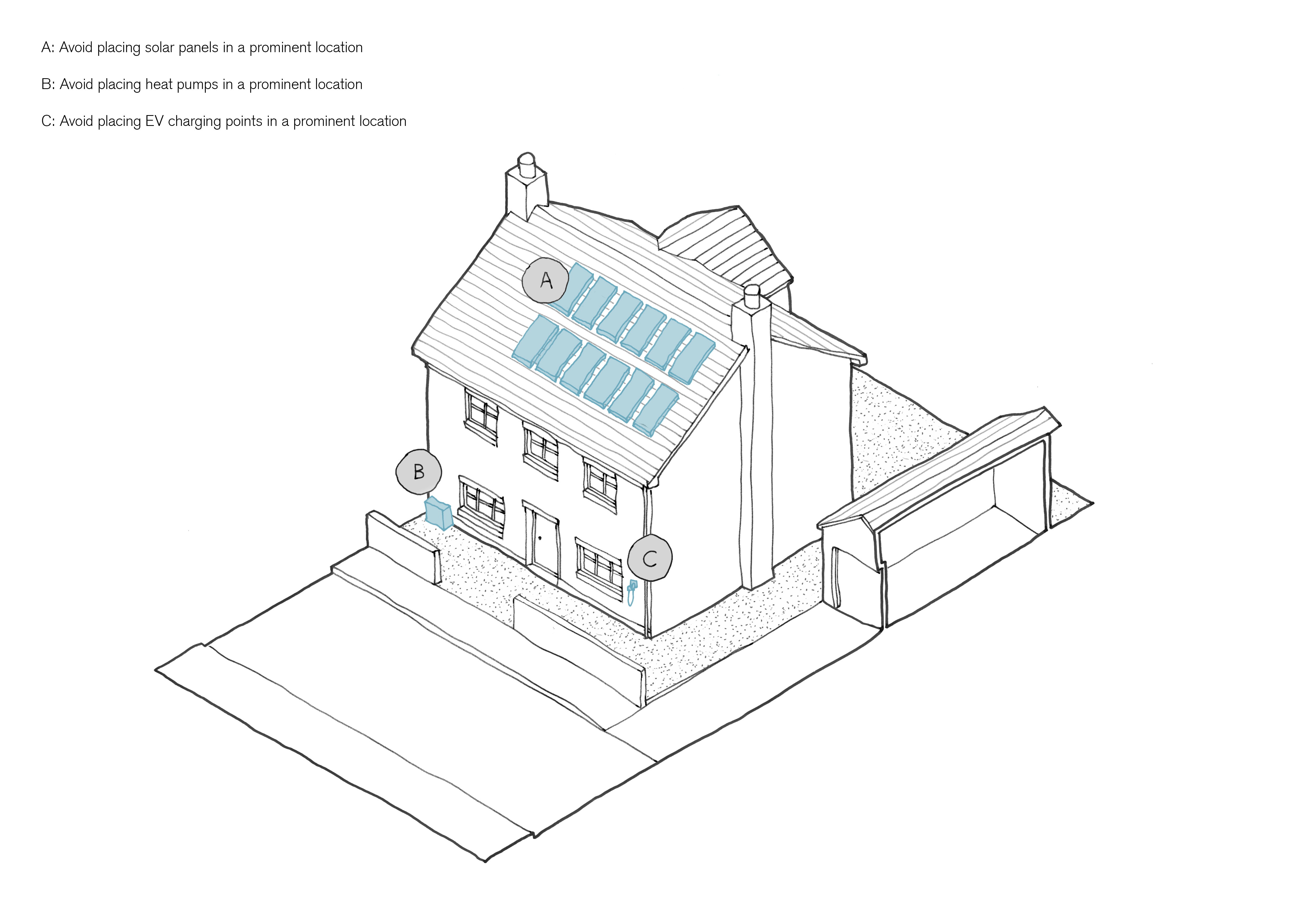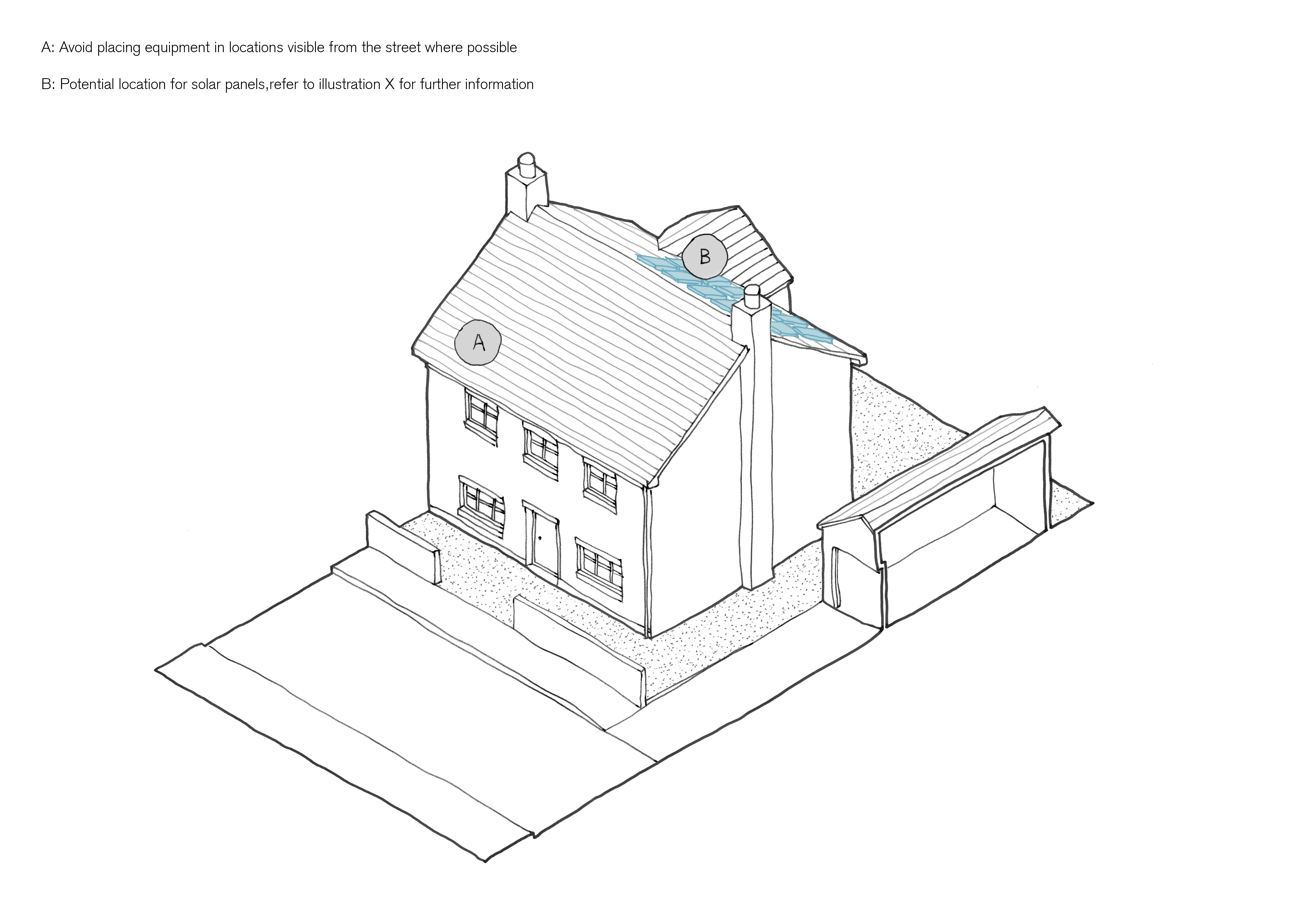Renewables and Low Carbon Options for Traditional Buildings
There are a range of different renewables and low carbon options, such as, solar panels, solar thermal panels and heat pumps that may be applied to traditional buildings.
Installation of renewables or low carbon options should be considered after ensuring the building is performing efficiently. As output from renewables can fluctuate there is often still a requirement for electricity input. If the building is under performing, an increased amount of energy will be required, whereas if less energy is needed, there will be less demand on the renewables and the need for low carbon options to be heavily balanced with electricity will be reduced.
Historic England have set out a number of considerations when assessing options for low and zero carbon energy sources:
- Does it suit the particular building and use?
- What are the carbon reduction benefits?
- Will the potential savings exceed the whole-life energy costs?
- Can the system be fitted safely with no significant adverse impact on the building and its historic fabric?
- What will be the visual impact on the building/heritage asset and its setting?
- Are there any planning controlsthat affect your choice and positioning of the installation?
| Renewable | Planning Considerations | Risk | Further Considerations |
| Active Solar Technology, Solar Panels or Solar Thermal either building mounted or domestic stand alone |
|
MEDIUM/HIGH RISK | Subject to scale, design, and fixings. Location should be carefully considered and positioned sympathetically. |
| Ground Source Heat Pumps |
|
MEDIUM RISK | Location should be carefully considered and positioned sympathetically. |
| Air Source Heat Pumps |
|
MEDIUM RISK | Location should be carefully considered and positioned sympathetically. |
| Wind – Building mounted |
|
HIGH RISK | Minimal gains and risk to buildings |
| Wind – Stand alone |
|
LOW RISK | Very limited gains with domestic scale turbines. Likely to be limited to most due to the land needed for turbines of sufficient scale. |
| Biomass |
|
||
| Electric charging points |
|
MEDIUM RISK | Subject to location and design, particularly if the provision of off-street parking is required |
Key Documents and Links
Historic England, Low and Zero Carbon Technologies
Historic Environment Scotland, Short Guide 8: Micro-Renewables in the Historic Environment
Historic Environment Scotland, Managing Change in the Historic Environment: Micro-renewables
CAT, Energy options
Energy Saving Trust, Generating renewable electricity
Energy Saving Trust, Low carbon heating options
Energy Saving Trust, Heating & Hot Water
Microgeneration Certification Scheme is a nationally recognised quality assurance scheme, supported by the Department for Business, Energy & Industrial Strategy. MCS certifies microgeneration technologies used to produce electricity and heat from renewable sources.
Page updated: 26/05/2023

